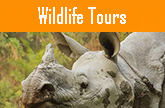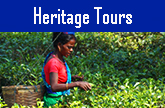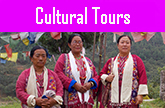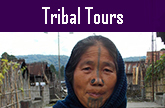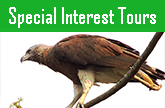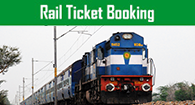North East India Tribes
North-East India is the land of hundreds of tribes and communities. It serves as a cultural museum to mainland India. Unity in diversity is the main feature in the lives among different tribes and communities of Indian people. Rich and vibrant traditions of ethnic indigenous tribes dwelling in North East Indian states showcase prosperity of Indian culture and religious practices.
Assam
Assamese
This portion of the page is under construction
Ahom
This portion of the page is under construction
Tai Ahom
This portion of the page is under construction
Bodo people
This portion of the page is under construction
Mishing
This portion of the page is under construction
Sonowal Kachari
This portion of the page is under construction
Deori
This portion of the page is under construction
Karbi
This portion of the page is under construction
Khasi
This portion of the page is under construction
Tiwa
This portion of the page is under construction
Jayantia
This portion of the page is under construction
Meghalaya
Garo
This portion of the page is under construction
Khasi
This portion of the page is under construction
Jayantia
This portion of the page is under construction
Arunachal Pradesh
Nyishi
This portion of the page is under construction
Apatani
This portion of the page is under construction
Hill Miri
This portion of the page is under construction
Tagin
This portion of the page is under construction
Galo
This portion of the page is under construction
Memba
This portion of the page is under construction
Adi
This portion of the page is under construction
Idu Mishmi
This portion of the page is under construction
Khamti
This portion of the page is under construction
Nagaland
Kuki
The Kukis decorate themselves with beautiful ornaments such as earrings, bracelets, bangles, necklaces and a ring shaped earring worn during special occasions. Smoking from crafted pipes is common among both men and women of the Kuki tribe. Mimkuut is a major festival of the Kukis celebrated during the month of January.
Angami Naga
Angami Nagas cover a greater place in the tribal population of Nagaland. Being one of the major tribes of the state, the capital city Kohima is mostly inhabited by this tribe. Land, as a property is regarded as the most valuable asset by the Angami Nagas as their economy is primarily based on agriculture, mainly terraced wet rice cultivation. Sekrenyi (or Phousanyi) is the festival celebrated by the Angami Nagas marking the beginning of the lunar year. It is a post-harvest festival, celebrated annually for ten days in the month of February.
Rengma
Local folktales and oral records narrate of the Rengma and Lotha tribes as parts of a single tribe. Local traditions speak of a great struggle between the combined Rengma village and Lotha village of Phiro. The Rengmas regard Ngada as the mother of all festivals. This festival includes a tradition of the mother of the household tasting the newly harvested grains before any other member of the family does. This annual festival observed towards the end of November or beginning of December is also celebrated in remembrance of the dead relatives.
Lotha
Colourful dances and folksongs identify the Lotha tribe. The beautiful shawls worn by the male members of the Lotha tribe represent their social status. Tokhu Emong is the famous harvest festival observed by the Lothas. This festival implies ‘resting before feasting’. All kinds of activities such as hunting, fishing, trading or travelling is forbidden during the celebration of the festival.
Ao Naga
One of the major tribe of Nagaland, the Ao Nagas is chiefly the inhabitant tribe belonging to Mokokchung, one of the districts of Nagaland. There prevails a traditional belief that the Ao Nagas originated out of the earth at ‘Longterok’ meaning ‘six stones’ considered as the fountain head of everything. The Ao Nagas regard their folklores as valuable asset. They believe that these folklores help them to preserve the social structure of the society. The Ao Nagas are famous for the various harvest festivals observed by them each year. Moatsu is the harvest festival celebrated for six days in the month of May which is marked by singing, dancing and animal sacrifices. Tsungremong is another harvest festival by the Ao Nagas during the month of August.
Konyak Naga
The Konyak Nagas dwell mostly in the Mon district of Nagaland. The tribe still maintains and preserves the age old traditions and customs as compared to other tribes and so they are acclaimed to be one of the largest and most lively tribe of Nagaland. The Konyak Nagas are grouped into two clans – the Pen and the Angh. Matrimonial alliance is willingly welcomed between both the clans. Aoleang Monyu is the harvest festival celebrated by the Konyak Nagas marking the end of the old year and approaching of a new year. The Konyak Nagas are skilled persons in wood carvings, guns, gun powder, headgears and metal ornaments.









